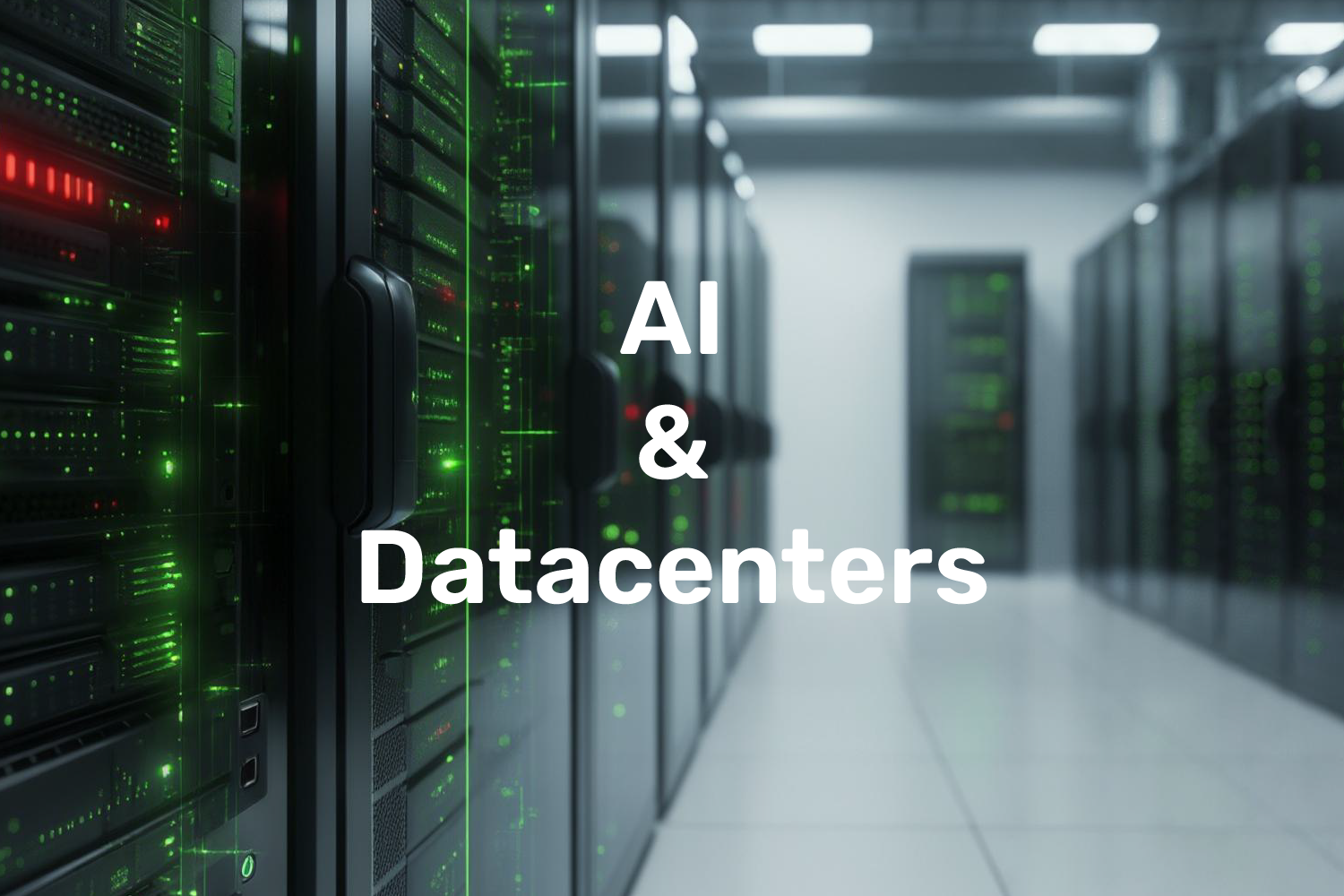Since 2024, artificial intelligence has been booming and is significantly transforming the way companies approach their digital transformation.This technological revolution, although it offers new perspectives, raises many questions:what about the energy consumption of data centers and their environmental impact?
A rapidly growing energy demand
AI, like many digital tools, is intangible; we don’t necessarily think about what is needed to make it work, yet the impact is very real: AI leads to a significant increase in computing power requirements.In 2023, the share of AI in the total consumption of data centers has significantly increased, and it could even reach up to 20% in the coming years.It is therefore logical to consider a more frugal and contextualized use.
Optimization and resource management
On one hand, AI allows for improving the energy efficiency of infrastructures.For example, sophisticated algorithms optimize server cooling, thereby helping to reduce energy overconsumption.On the other hand, the increase in AI-related workloads highlights the need to rethink optimization strategies, particularly through:
- The modernization of infrastructure: adoption of advanced technologies such as liquid cooling or free cooling.
- The strategic location of data centers: installation in areas where electricity is less carbon-intensive or where the climate favors natural cooling.
These solutions, combined with rigorous resource management, are essential to reconcile technological performance and environmental responsibility.
Economic and environmental challenges
The rapid growth in energy needs is driving industry players to invest heavily in new infrastructure.Investments amounting to billions of euros are underway to support this expansion.However, these investments must imperatively integrate environmental criteria to ensure that the growth of digital technology does not come at the expense of the planet.The challenge is to find a balance between economic performance and reducing the carbon footprint.
Share this article on social media
Since 2024, artificial intelligence has been booming and is significantly transforming the way companies approach their digital transformation.This technological revolution, although it offers new perspectives, raises many questions:what about the energy consumption of data centers and their environmental impact?
A rapidly growing energy demand
AI, like many digital tools, is intangible; we don’t necessarily think about what is needed to make it work, yet the impact is very real: AI leads to a significant increase in computing power requirements.In 2023, the share of AI in the total consumption of data centers has significantly increased, and it could even reach up to 20% in the coming years.It is therefore logical to consider a more frugal and contextualized use.
Optimization and resource management
On one hand, AI allows for improving the energy efficiency of infrastructures.For example, sophisticated algorithms optimize server cooling, thereby helping to reduce energy overconsumption.On the other hand, the increase in AI-related workloads highlights the need to rethink optimization strategies, particularly through:
- The modernization of infrastructure: adoption of advanced technologies such as liquid cooling or free cooling.
- The strategic location of data centers: installation in areas where electricity is less carbon-intensive or where the climate favors natural cooling.
These solutions, combined with rigorous resource management, are essential to reconcile technological performance and environmental responsibility.
Economic and environmental challenges
The rapid growth in energy needs is driving industry players to invest heavily in new infrastructure.Investments amounting to billions of euros are underway to support this expansion.However, these investments must imperatively integrate environmental criteria to ensure that the growth of digital technology does not come at the expense of the planet.The challenge is to find a balance between economic performance and reducing the carbon footprint.


